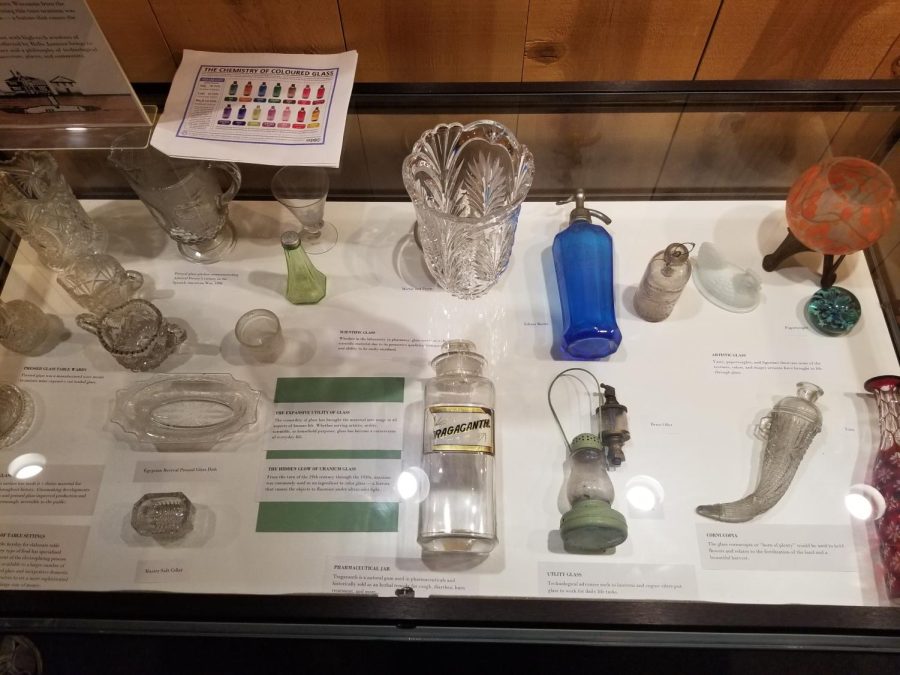“The Science and Art of Glass” Display
The Mining & Rollo Jamison Museums showcased their new exhibit, “The Science and Art of Glass,” as part of the Wisconsin Science Festival, which ran from Oct. 10 through Oct. 16, where the exhibit highlighted the International Year of Glass.
The Wisconsin Science Festival, a statewide celebration of scientific experiences, highlighted “a specific aspect of the world around us to generate additional excitement and creativity within events and programs.” This year the emphasis was on glass and its impacts on science, art and technology, as stated by the WSF organization.
The week-long glass display “was set up because of the Wisconsin Science Week,” said Mary Huck, a volunteer at the museum, who worked previously at The Mining & Rollo Jamison Museums for thirty years.
Huck pointed to the finely chiseled vase-shaped glass on the top of the display made of lead crystal. Huck said, “They added lead to the glass. Lead made the glass softer, easier to shape and easier to cut … If you lift it, you’re also going to notice it’s that much heavier.” Huck continued, “Because of the characteristics of its softness, it’d take the cut better and it’d be more brilliant than glass made without lead.”
Huck hinted at the health risks from the use of lead in household products. When lead was put into “glasses and decanters and things like that, it (was) not good, but they are still making it for decorative things, because it does something that you don’t get without it (visually),” explained Huck. Then Huck stated, “Every time you put something in (glass), you get a little different effect … You can add zinc oxide, which gives you some of the effect of (lead crystal).”
Then Huck explained the differences in colors in the case and the minerals that created those colors. She said, “If you wanted different colors, like a brown beer bottle, that’s almost always made with iron and sulfur … and the greens that you find for bottles can be a couple of different things. Uranium is one of them, but also iron will make a green wine glass.” Huck pointed out another green glass piece and said, “That is manganese, which will show a different tone of green.”
According to “The Chemistry of Coloured Glass,” a chart made available at the display, the additional colors in the case included a blue seltzer bottle that was likely made with copper in its glass, and a red vase, which could have been made from gold, copper-tin, or selenium cadmium, which is toxic.
A particular feature that was showcased was the uranium glass. The description for it in the new display stated, “From the turn of the 19th century through the 1930s, uranium was commonly used as an ingredient to color glass – a feature that causes the objects to fluoresce under ultraviolet light.”
Huck then demonstrated with the uranium of a green glass container that resembled a salt shaker, and its radioactive quality gleamed. The salt shaker looked like it glowed in the dark under the beam of the black light even in the well-lit display.




